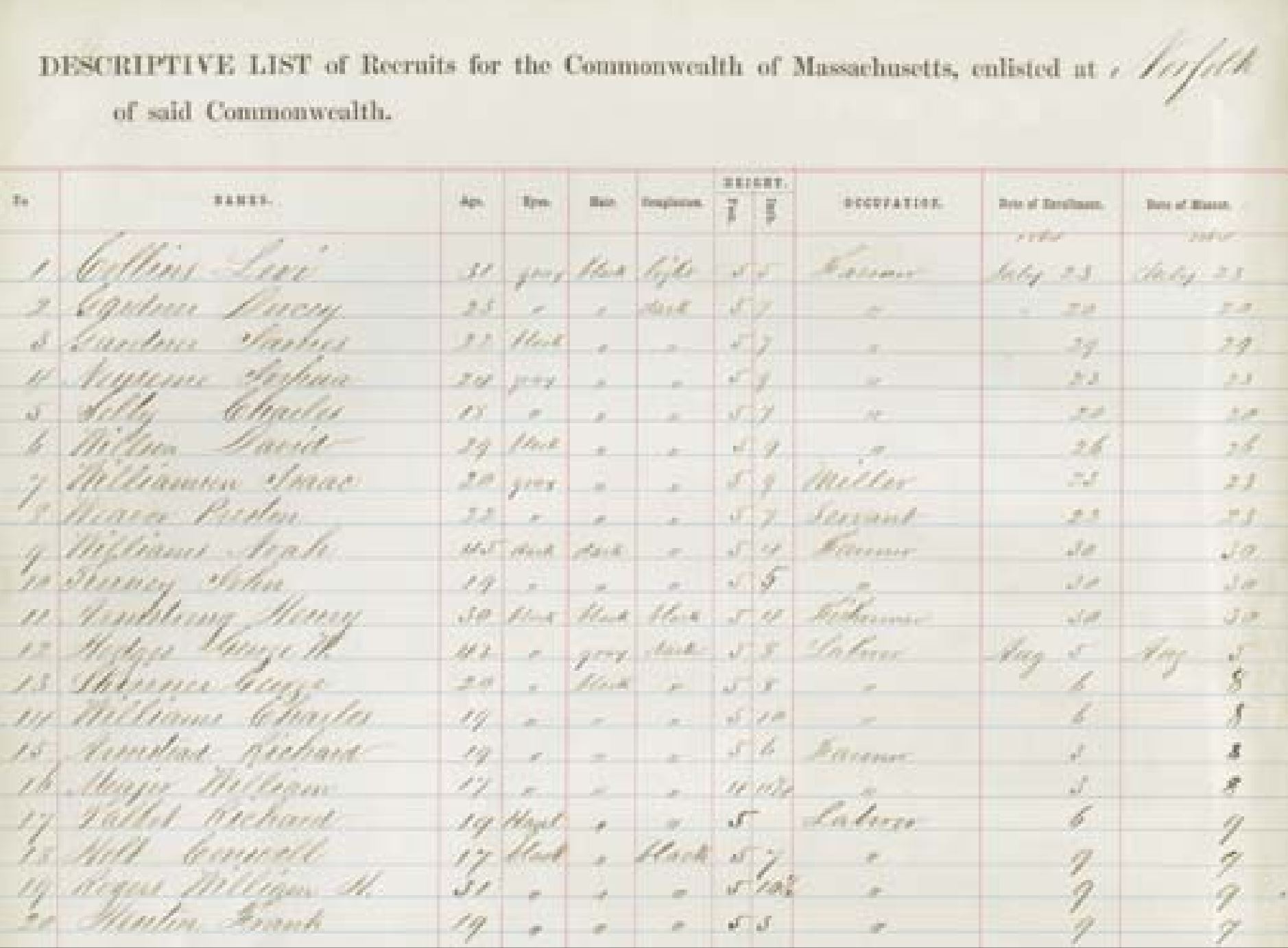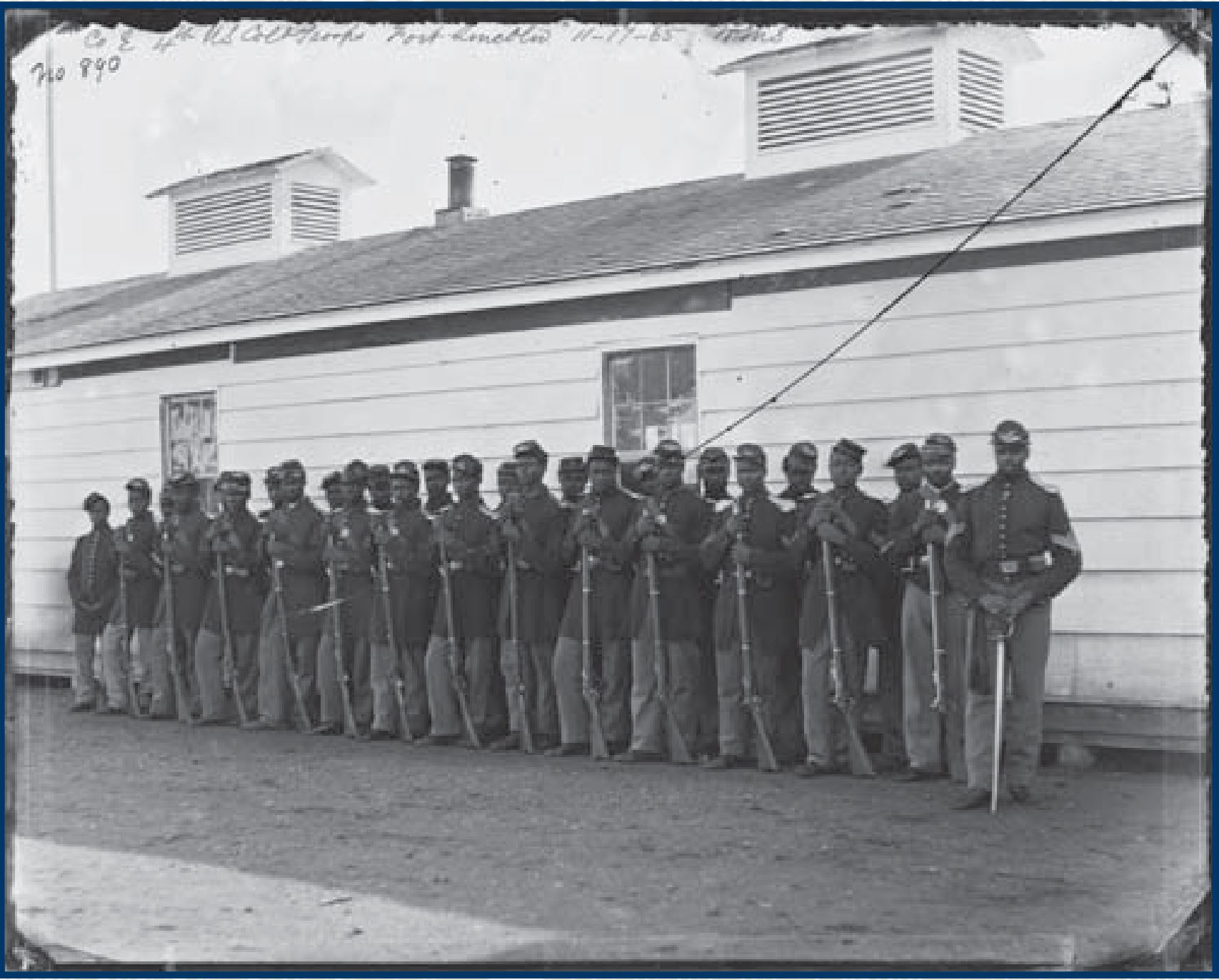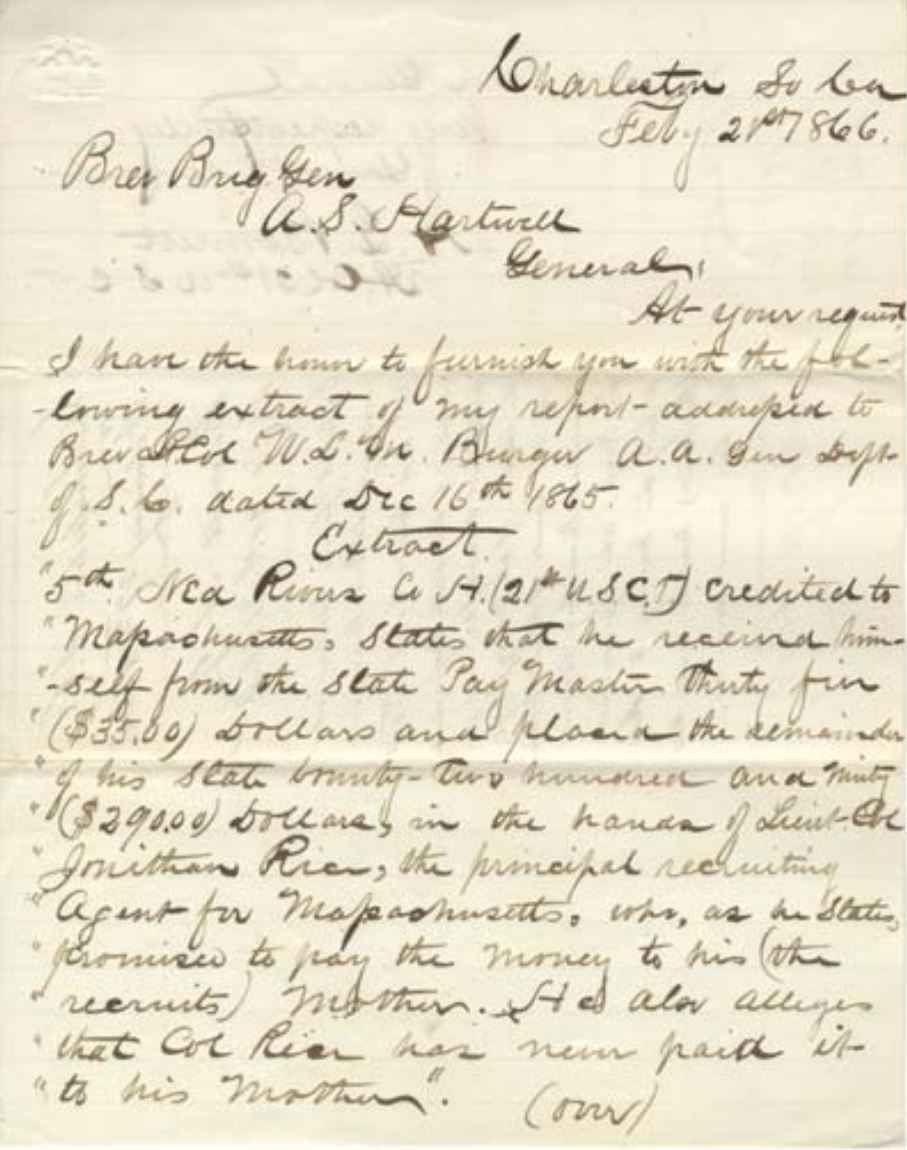After Massachusetts led the way with the formation of the 54th and 55th regiments, scores of federal black regiments were then formed, called the United States Colored Troops.
On July 4, 1864, Congress passed an act allowing any state to appoint agents to recruit southerners, primarily into the all-black United States Colored Troops. In exchange for providing bounties, states received credit towards their own recruiting quotas. Massachusetts' recruiting agents were sent to southern locations and enlisted almost 2,500 men, most in Vicksburg, Mississippi, and Hilton Head, South Carolina. These southern recruits could be credited to Massachusetts' towns, to drafted men seeking substitutes, or even to patriotic citizens who donated funds to sponsor a “representative recruit.” As a number of states competed for these southern recruits, Massachusetts offered the same $325 bounty paid to its own troops at the time. Later, some raw recruits were found to have been cheated out of promised bounties by unscrupulous agents or officers.

Descriptive list, Norfolk, Virginia, 1864 This roll provides physical descriptions and occupations of black men recruited by a Massachusetts agent in Norfolk, Virginia. These soldiers were primarily assigned to the 38th Infantry Regiment and the 1st Cavalry Regiment, U.S. Colored Troops.
- Massachusetts Archives

U.S. Colored Troops
This image, taken in Washington, D.C., depicts Company E of the 4th
U.S. Colored Infantry.
- Courtesy of Library of Congress, Prints and Photographs Division

Testimony, 1866
Newton native Colonel Alfred Stedman Hartwell, a white
officer in the 55th Massachusetts Infantry, was asked to
lead an investigation aft er the Civil War into irregular
recruiting practices in the South. This letter received by
Hartwell describes how one southern Massachusetts
recruit had been cheated out of most of his bounty.
- Courtesy State Library of Massachusetts, Special Collections

This 1750 Massachusetts
Bounty elective roll, Vicksburg, Mississippi, December 1864
Recruits from the South chose how they wished to have their bounties paid by Massachusetts, with most
electing to receive the $325 at once. While most were African-American, a number of white men also signed
up and were assigned to Union regiments in both northern and southern states. Th is roll shows that many
southern recruits, both black and white, were illiterate, as they marked Xs rather than signing their names.
- Massachusetts Archives
❮
❯
